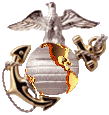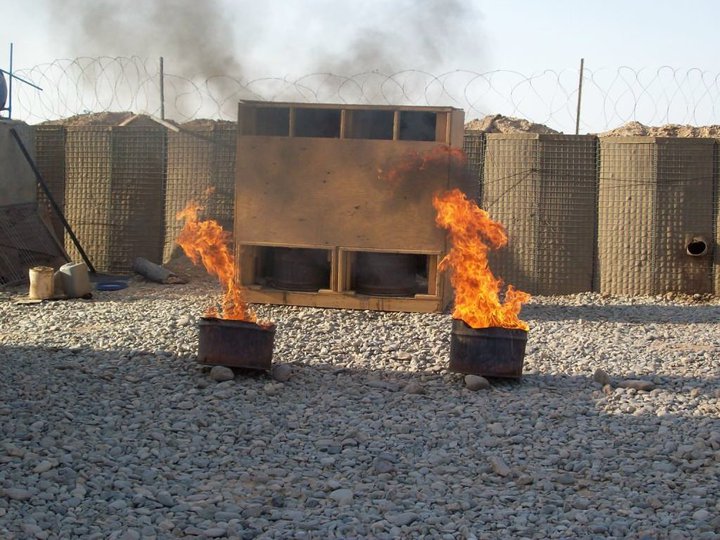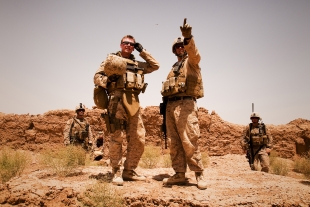SOUTHERN SHORSURAK, HELMAND PROVINCE, Islamic Republic of Afghanistan
Cpl. Matt Garst L/3/3 finds IED (the hard way).
Few people survive stepping on an improvised explosive device. Even fewer walk away the same day after directly absorbing the force of the blast, but Garst did just that.
A squad leader with 3rd Battalion, 3rd Marine Regiment, Garst was leading his squad on a patrol in Southern Shorsurak, Afghanistan, June 23 to establish a vehicle checkpoint in support of Operation New Daw
n.
The men were four miles from Company L's newly established observation post when they approached an abandoned compound close to where they needed to set up their checkpoint. It would serve well as an operating base — a place for the squad to set up communications and rotate Marines in and out of. But first, it had to be secured.
As they swept the area with a metal detector, the IED registered no warning on the device. The bomb was buried too deep and its metallic signature too weak. Two men walked over it without it detonating.
“I can just barely remember the boom,” Garst said. “I remember the start of a loud noise and then I blacked out.”
Since Garst's improbable run-in with the IED, his tale has spread through the rest of the battalion, and as often happens in combat units, the story mutates, the tale becoming more and more extraordinary about what happened next: He held onto his rifle the whole time … He actually landed on his feet … He remained unmoved, absorbing the impact like he was muffling a fart in a crowded elevator …
What really happened even eludes Garst. All went black after the earth uppercut him. When he came to, he was standing on his feet holding his weapon, turning to see the remnants of the blast and wondering why his squad had a look on their faces as if they’d seen a ghost.
Marines in Company L think Garst is the luckiest guy in the battalion, and while that may seem a fair assessment, it was the enemy’s shoddy work that left Garst standing. The three-liters of homemade explosive only partially detonated.
Marines who witnessed the event from inside the compound caught glimpses of Garst’s feet flailing through the air just above the other side of the building’s eight-foot walls. The explosion knocked him at least fifteen feet away where he landed on his limp head and shoulders before immediately standing back up.
Not quite sure of what had just happened, Garst turned back toward the blast, now nothing but a column of dirt and smoke rising toward the sun.
“My first thought was, ‘Oh s---, I just hit an IED,’” he said. “Then I thought, ‘Well I’m standing. That’s good.’”
Garst’s squad stared at him in disbelief. The square-jawed Marine has a tendency to be short-tempered, and the realization that the blast was meant to kill him spiked his adrenaline and anger.
“It pissed me off,” he said.
He directed his men to establish a security perimeter while letting them know in his own way that he was OK.
“What the f--- are you looking at?” he said. “Get on the cordon!”
Garst quickly radioed back to base, calling an explosive ordnance disposal team and quick reaction force.
“I called them and said, ‘hey, I just got blown up. Get ready,’” he said. “The guy thought I was joking at first. ‘You got blown up? You’re not calling me. Get out of here.’”
Once EOD cleared the area, Garst led his squad the four miles back to their observation post — just hours after being ragdolled by an IED blast.
“I wasn’t going to let anybody else take my squad back after they’d been there for me,” he said. “That’s my job.”
The next day Garst awoke with a pounding headache and was as sore as he’d ever been in his life.
“Just getting up from trying to sleep was painful,” he said.
But he saw no reason being sore should slow him down. He popped some ibuprofen and after a day of rest, Garst was back out on patrol, showing his Marines and the enemy that just like his resolve — Cpl Matt Garst is unbreakable.
Cpl. Matt Garst is unbreakable.
The squad leader from Company L, 3rd Battalion, 3rd Marine Regiment, stood on his own free will immediately after triggering an anti-personnel, improvised explosive device directly beneath his feet, which sent him tumbling six feet up and 15 feet through the air before landing on his limp head and shoulders during a patrol to the east of his company’s newly established observation post in Southern Shorsurak, Helmand province, Afghanistan, as part of Operation New Dawn, June 23, 2010. Thanks to luck, Garst’s tenacity, and mistakes by the enemy, the IED comprised of three liters of homemade explosive only partially detonated and Garst absorbed the blast unharmed, hold for feeling “like hell” the next day. Garst, from Charlotte, N.C., led his Marines the four miles back to their post after the blast. Following a day of recovery, he began patrolling efforts again. “I’m an aggressive person,” Garst said. “It pissed me off. All I want to do is make sure it doesn’t happen again. I’m just happy it wasn’t any of my guys. I’m not happy to get blown up by any means. I would have loved for it to have never happened. But, if it’s going to be anyone I’d rather it be me, and if it’s going to be a bomb, I’d rather it be that bomb, because it didn’t do s---.” Operation New Dawn is a joint operation between Marine Corps units and the Afghanistan National Army to disrupt enemy forces, which have been using the sparsely populated region between Marjah and Nawa as a safe haven.
Sgt. Mark Fayloga, 6/23/2010 & 6/29/2010 Regimental Combat Team 7



At six feet, two inches tall and 260 pounds with all his gear on, Garst is easily the largest man in his squad by 30 or 40 pounds — just enough extra weight to trigge the IED buried deep in hard-packed soil.
Lance Cpl. Edgar Jones, a combat engineer with the squad, found a pressure plate inside the compound and hollered to Garst, asking what he should dowith it. Garst turned around to answer the Marine and stepped on the bomb.

Some things never change!
Elementary, My Dear Marine: Operation New Dawn Patrols Lead to Cache Finds
Story by Sgt. Mark Fayloga Regimental Combat Team-7
06.20.2010
SOUTHERN SHORSURAK, Afghanistan — It became the catchphrase of the day — “I might as well be God d---ed Sherlock Holmes.”
A bit vulgar with a touch of arrogance, but the Marine saying it had a right to be cocky. Sgt. James R. Humerick had tracked down an improvised explosive device cache as if he’d had a premonition. The squad leader from Lima Company, 3rd Battalion, 3rd Marine Regiment, didn’t just call the compound it was in, he narrowed it down to the room.
Shortly after departing the company’s newly established observation post in Southern Shorsurak for a patrol as part of Operation New Dawn, June 20, Humerick led his squad east toward empty compounds. No more than a minute after telling his Marine to sweep a room, the handheld metal detector emitted a high-pitched whine. A little digging revealed an IED cache: two directional fragmentation IEDs weighing 35 pounds each, 15 feet of detonation cord and 15 pounds of ammonium nitrate and aluminum powder.
Triggered by the rush of the find, the Sherlock Holmes line was born. It would be repeated through the day, often as a joke, sometimes variations would take form, “Sgt. James Humerick, AKA Sherlock Holmes the most.”
Even though Humerick seemed to be a natural detective that day, he’d later admit the find was part luck, part experience. The discovery came on just the fourth day of Operation New Dawn, a joint operation between Marine Corps units and the Afghanistan National Army to disrupt enemy forces which have been using the sparsely populated region between Marjah and Nawa as a safe haven.
The Marines had limited their patrols to the north and south of their position for the first few days of the operation. Humerick’s patrol was among the first to head east.
“I decided to go straight east and see what was out there,” Humerick said. “We came upon that compound and it just looked like somewhere where I’d hide something. It was run down, nobody lived there. That’s what I try to think like, ‘What would I do? Where would I put it?’ If you do that, usually you’re pretty accurate.”
According to Master Sgt. Jeffrey A. Bratcher, an explosive ordnance disposal staff non-commissioned officer in charge from Marine Wing Support Squadron 274, the IEDs were similar to what has been found in the Helmand province and are primarily used to hit Marines on dismounted patrols.
The Marines were able to see what the IEDs are capable of when Bratcher and his fellow EOD technician destroyed the cache during a controlled detonation just hours after it was found.
As the blast sent shockwaves through the earth, and smoke and sand high into the sky, Humerick had the same thought he’d had in the back of his mind since finding the cache.
“Everyone wants to find a fight, but bringing everybody back is the most important,” Humerick said. “Finding those IEDs, you’re saving lives. Well, somebody else might find them, but when you find them you’re pretty much keeping someone in the fight
The patrol that day was a success, and other patrols by other squads during the first week of the operation would also yield cache finds.
For Humerick, from Great Falls, Mont., the find was a welcome change of pace. He is on his fourth deployment and in previous experiences, “We didn’t really find the IEDS, they kind of found us.”

